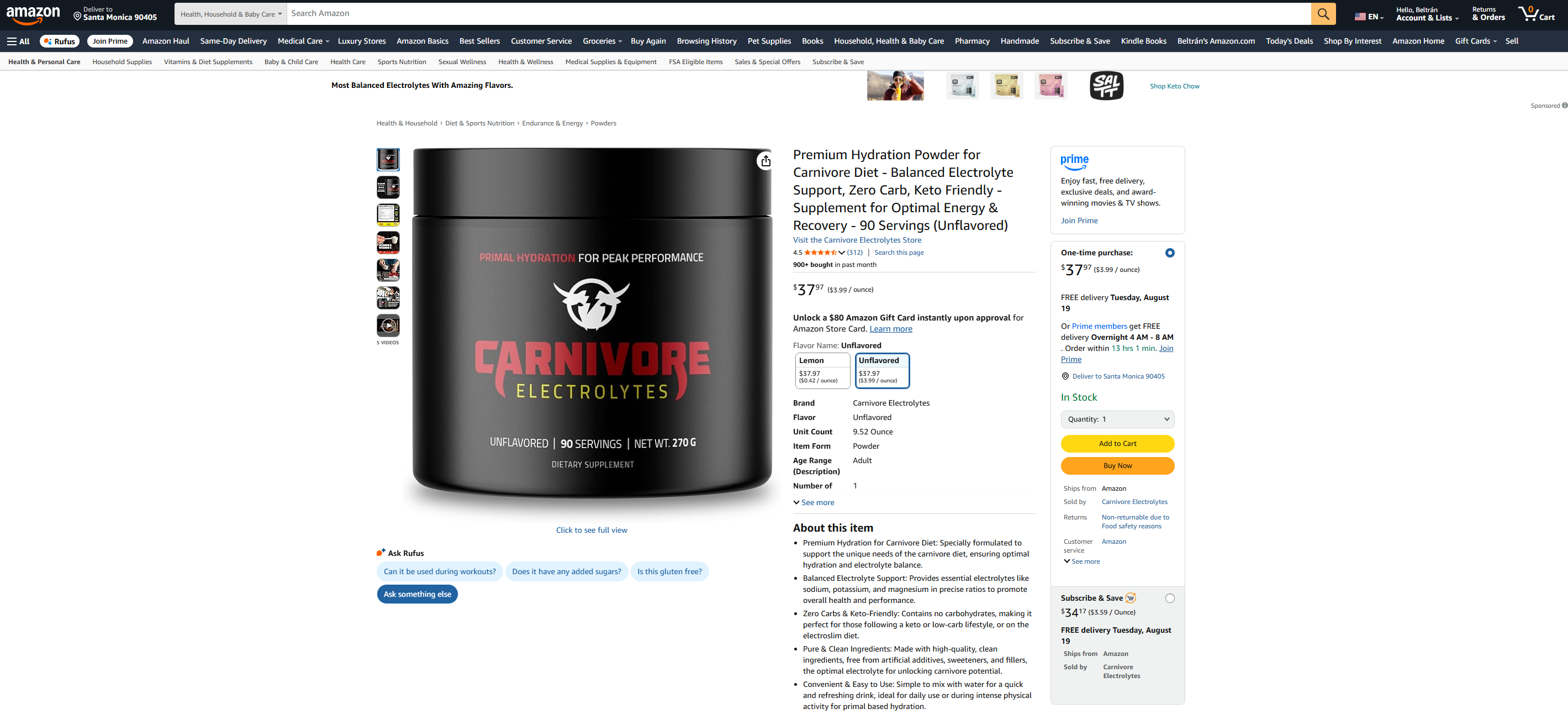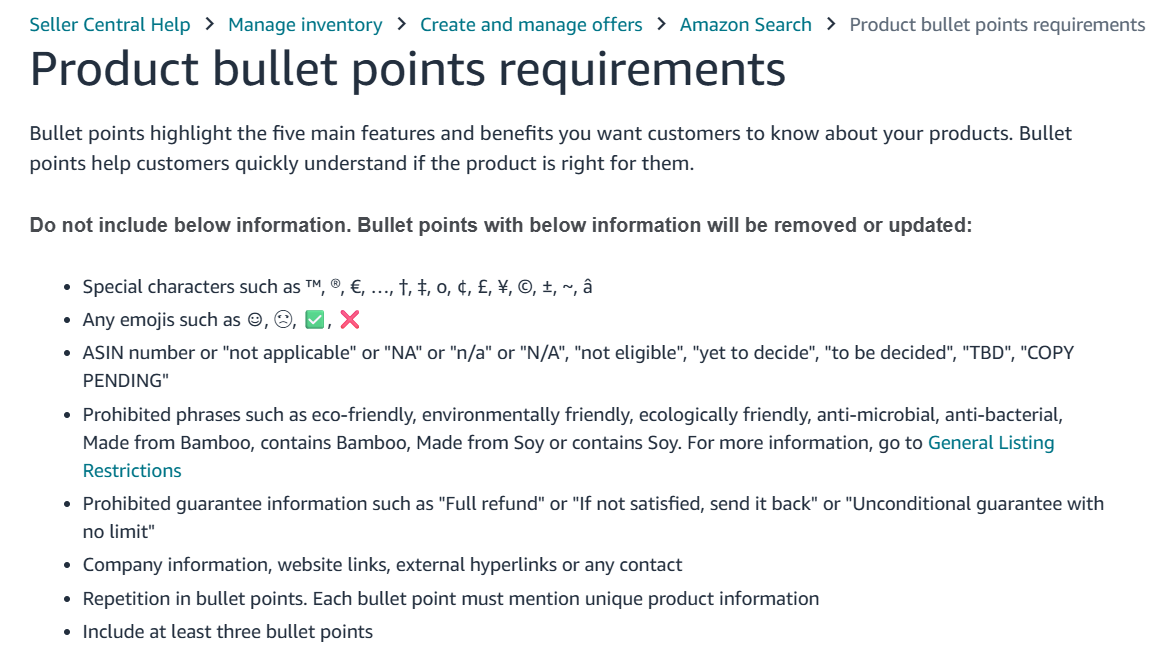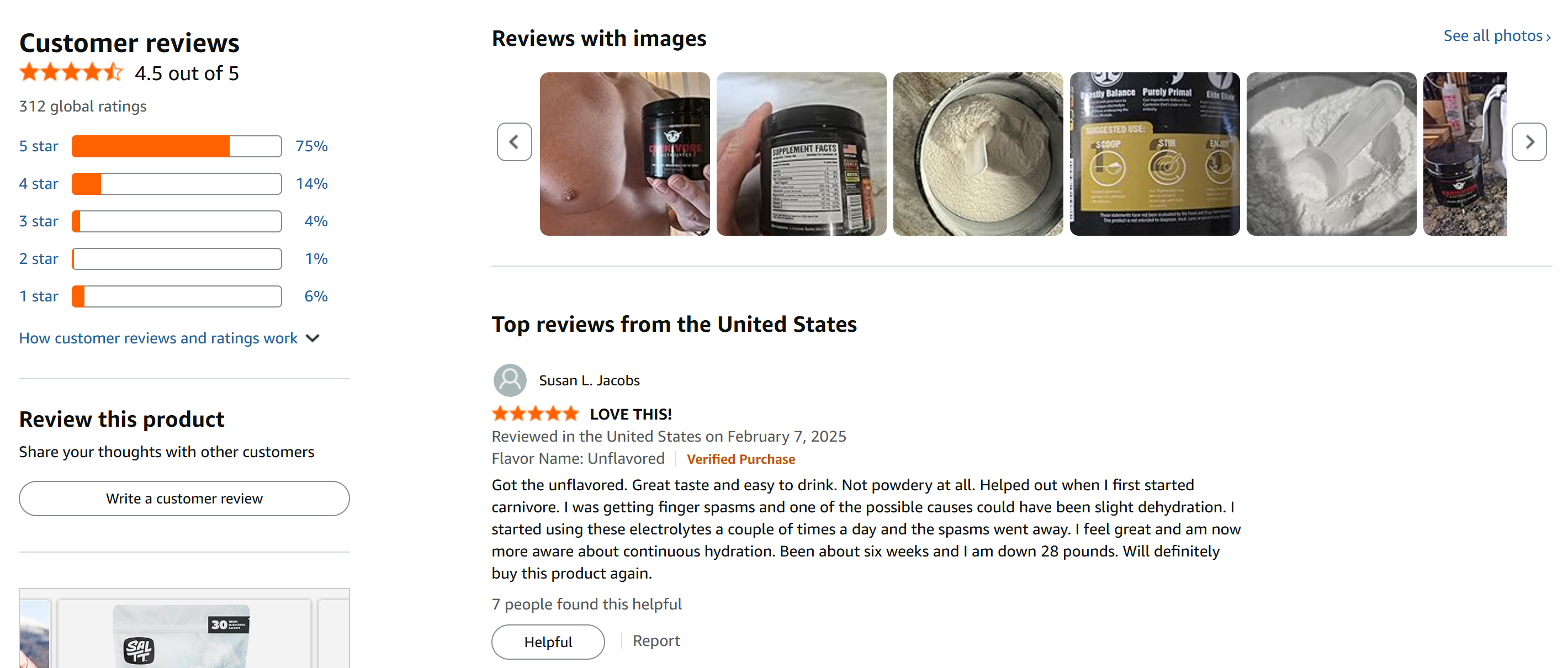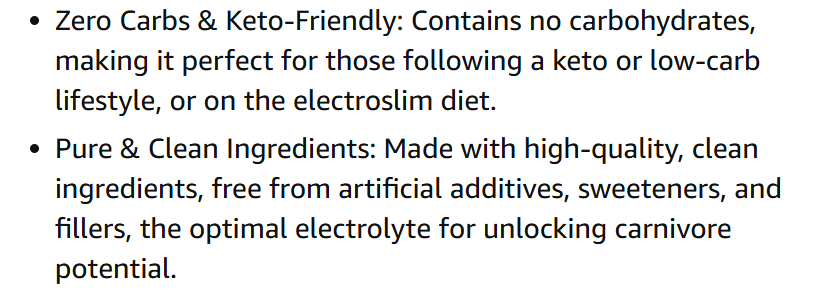
Top 3 Secrets to Writing High Converting Amazon Bullet Points | 2025 Guide
Tips That Actually WorK

On Amazon, attention is a scarce commodity. You have seconds – sometimes less – to convince a shopper to stay on your listing instead of clicking back to the search results.
Your title may hook them. Your images may catch their eye. But it’s your Amazon Bullet Points that often tip the scale between considering and buying.
Many sellers underestimate bullet points, treating them as an afterthought or a checklist of product specs. Yet in Amazon’s highly competitive environment, bullet points act as:
- A sales pitch – persuading buyers by highlighting benefits and overcoming objections.
- An SEO tool – helping your product rank for relevant search terms.
- A trust builder – reassuring buyers that your product delivers on its promise.
According to Amazon’s own content guidelines, bullet points are one of the most viewed sections of a product detail page. That means they play a direct role in influencing conversions – and by extension, your sales velocity, Best Seller Rank (BSR), and advertising ROI.
In this guide, you’ll discover the top three secrets to writing high-converting Amazon Bullet Points, backed by proven copywriting principles and e-commerce psychology. And while these strategies are powerful for any seller, we’ll also explore why hiring an Amazon listing expert can accelerate results and prevent costly mistakes.
- The Anatomy of High-Converting Amazon Bullet Points
- Secret #1 – Lead with Benefits, Not Just Features
- Secret #2 – Use Power Words and Sensory Language
- Secret #3 – Anticipate and Answer Customer Objections
- Optimizing Amazon Bullet Points for Both SEO and Conversions
- Why Hiring an Expert is Worth It
- From Words to Revenue – Making Your Bullet Points Work for You
- FAQ – Amazon Bullet Points
The Anatomy of High-Converting Amazon Bullet Points
Before you can master the art of persuasive bullet points, you need to understand what makes them work.
Character Limits & Formatting

Amazon limits bullet points to around 200–250 characters depending on category. This is tight real estate – you need to balance keyword inclusion, benefit-driven messaging, and readability in just a couple of short lines.
- Lead with all caps benefit phrases (e.g., “STAY HYDRATED ALL DAY”) to grab attention.
- Keep sentences concise so they can be scanned quickly on desktop and mobile.
- Avoid excessive punctuation, which can hurt readability and sometimes violate style guidelines.
Balancing Keywords and Readability
Bullet points are indexed by Amazon’s search algorithm. Well-placed keywords help you show up for relevant searches. But keyword stuffing not only turns off shoppers – it can trigger compliance warnings.
A well-optimized bullet point should:
- Integrate primary keywords naturally in the opening phrase or first sentence.
- Include secondary keywords without compromising flow.
- Still read as if a human wrote it for another human.
The Three Layers of Effective Bullet Points
To be persuasive, bullet points should have a layered structure:
- Feature – The factual, tangible attribute of your product.
- Benefit – The practical way that feature improves the buyer’s life.
- Emotional Hook – The feeling or experience the buyer will enjoy because of it.
Example:
❌ “Made of stainless steel.”
✅ “PREMIUM STAINLESS STEEL – Rust-resistant for years of worry-free cooking, so you can create delicious meals without replacing your cookware.”
Secret #1 – Lead with Benefits, Not Just Features

A common rookie mistake is writing bullet points like a tech spec sheet. While specs matter, they don’t drive purchases alone.
Why Benefits Sell
Shoppers care about results, not just attributes. When you lead with benefits, you answer the core buying question: “What’s in it for me?”
Example transformation:
- Feature: “500ml bottle.”
- Benefit-first: “STAY HYDRATED ANYWHERE – Perfect 500ml size keeps you refreshed at work, during workouts, or while traveling.”
The Science Behind Benefits

Research in consumer psychology shows that emotional value outweighs functional value in decision-making. A benefit connects to a personal desire – saving time, improving health, gaining confidence – while a feature only provides data.
How to Uncover Benefits in Your Product
- Read your own reviews – What do customers praise most?
- Analyze competitor reviews – Which benefits do their customers love? Which complaints can your product solve?
- Ask “so what?” after every feature until you find the emotional driver.
Example:
Feature: “Adjustable strap.”
So what? “Fits all head sizes.”
So what? “Comfortable for everyone, no matter the activity.”
Secret #2 – Use Power Words and Sensory Language

Benefits tell shoppers why to buy, but the right language makes them want to buy right now.
What Are Power Words?
Power words are emotionally charged terms that grab attention and create urgency, curiosity, or desire. They turn a factual bullet point into a persuasive one.
Examples:
- Sensory: silky smooth, rich aroma, velvety touch
- Urgency: limited edition, act now, don’t miss out
- Exclusivity: handcrafted, premium grade, only here
The Role of Sensory Language
Sensory language helps buyers imagine the experience of using your product.
Instead of: “Soft fabric.”
Say: “WRAP YOURSELF IN COMFORT – Luxuriously soft fabric feels like a gentle embrace after a long day.”
This paints a picture, creating a mental connection that makes the product feel tangible – even through a screen.
Integrating Keywords Seamlessly
Power words should enhance – not replace – keywords. For example:
- Keyword: “organic green tea”
- Enhanced bullet: “ORGANIC GREEN TEA LEAVES – Experience a fresh, earthy aroma and smooth flavor in every sip.”
Secret #3 – Anticipate and Answer Customer Objections
Even if a buyer loves what they see, unspoken doubts can prevent them from completing a purchase.
Common Amazon Objections
- Quality concerns – “Will it last?”
- Fit or size worries – “Will it work for me?”
- Ease of use – “Is it too complicated?”
- Maintenance – “Is it hard to clean?”
- Risk factors – “What if it’s not what I expected?”
Turning Objections Into Selling Points

A good bullet point doesn’t wait for objections to show up in reviews – it addresses them in advance.
Instead of: “Machine washable.”
Say: “EASY CARE – Machine washable for quick cleaning and designed to keep its shape wash after wash.”
How to Find Buyer Objections
- Scan negative reviews of similar products.
- Look at Amazon Q&A sections.
- Analyze return reasons in your Seller Central account.
Expert Tactics
Amazon copywriters often create a “FAQ within the bullets” approach – embedding reassurance about durability, fit, or guarantees right inside persuasive copy. This neutralizes doubts before they can derail the sale.
Optimizing Amazon Bullet Points for Both SEO and Conversions
Bullet points must serve two masters: the algorithm and the customer.
SEO Without Keyword Stuffing
Amazon’s algorithm indexes bullet points for relevance. However, repetitive or unnatural keyword use can turn off readers and trigger compliance issues. The sweet spot is natural keyword integration – where keywords appear as part of a persuasive sentence.
Keyword Placement Strategies
- Primary keywords: place early in the first bullet.
- Secondary keywords: distribute evenly across remaining bullets.
- Long-tail keywords: integrate naturally where they make sense.
A/B Testing for Maximum Impact

Amazon’s Manage Your Experiments tool allows you to test different bullet point styles to see which version improves conversion rates. Testing benefits-first phrasing vs. feature-first, or power words vs. plain language, can reveal what resonates most with your audience.
Why Hiring an Expert is Worth It

Could you write bullet points yourself? Absolutely. But the reality is: great bullet points require a rare blend of copywriting skill, keyword knowledge, and buyer psychology.
ROI of Professional Copywriting
A modest 15% boost in conversion rates can significantly increase your monthly revenue without increasing traffic or ad spend.
Example: If your listing gets 10,000 visits a month with a 10% conversion rate, you make 1,000 sales. Boost that to 11.5% and you make 1,150 sales – a gain of 150 extra units sold without additional marketing costs.
Avoiding Costly Mistakes
Poorly written bullet points can lead to:
- Lower rankings due to bad keyword usage.
- Reduced trust if benefits aren’t clear.
- Listing suppression if claims violate policies.
Mini Case Study
A kitchenware brand saw flat sales despite running ads. An expert rewrote their bullet points with a benefits-first approach, sensory language, and objection-handling. Within 30 days, conversions increased 38%, resulting in a higher ROI on ads and improved BSR.
From Words to Revenue – Making Your Bullet Points Work for You
Your Amazon Bullet Points are not just text on a page – they’re a conversion engine. Done right, they turn casual browsers into committed buyers, improve keyword ranking, and build brand trust.
By leading with benefits, using persuasive language, and addressing objections proactively, you position your product as the obvious choice in a crowded marketplace.
And if you want to skip the trial-and-error phase, an experienced Amazon copywriter can deliver bullet points that are ready to convert from day one. In the competitive Amazon ecosystem, this is not a luxury – it’s a shortcut to faster sales growth.
FAQ – Amazon Bullet Points
How many bullet points can I use in my Amazon listing?
Most categories allow up to five bullet points. Always use the maximum allowed for your category to maximize keyword indexing and information delivery.
Should I include prices or discounts in my bullet points?
No. Amazon prohibits pricing and promotional claims in bullet points.
Can I use emojis in Amazon bullet points?
No. Amazon’s guidelines forbid emojis in bullet points, so stick to clean, professional formatting.
How often should I update my bullet points?
Review them every 3–6 months or after major product changes, new keyword research, or when customer feedback suggests missed selling points.
Are bullet points or descriptions more important?
Both matter, but bullet points are usually read first and have a bigger impact on purchase decisions.
Can I outsource bullet point writing without giving away my keywords?
Yes. Provide a keyword list without sensitive PPC or campaign data.
How do I know if my bullet points are working?
Track conversion rates in Seller Central and run A/B tests to compare different versions.
Have an Amazon product in mind?
We handle your entire Amazon listing from start to finish — including your title, listing images, A+ Content, and even your Brand Storefront.








